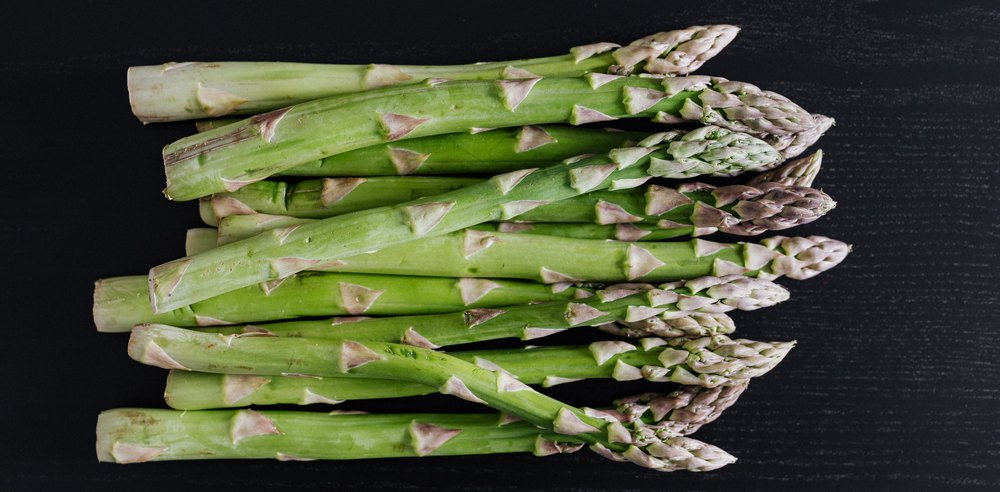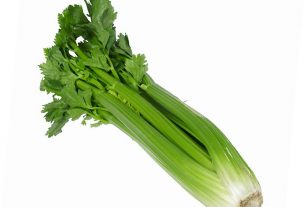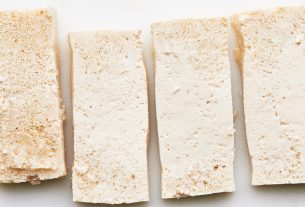Vegetables should be a regular component in our meals because of its different health advantages to our general well-being.
We always see vegetables in forms of fruits, flowers, seeds, and leaves. These physical appearances of a vegetables are enticing to eat, and we can cook them in different kinds of dishes.
One may not like to eat a kind of vegetable or how the vegetable is cooked, but there are other kinds of vegetables we may not know about.
So, here are some of the vegetables we often see and probably eat but we did not realize we are eating their stems too.
What vegetable stems can we eat?
We are aware that vegetables are the term we used to call the part of plants that are edible or which we can eat.
So, the stem part of the plant that we can eat are called stem vegetables or vegetable stems.
Vegetable stems can be an underground stem like potatoes or basically the plant stem where leaves and flowers grow but which can be eaten like asparagus, rhubarb, cauliflower, broccoli, and celery.
In this article, I would like to share some information about the commonly eaten vegetable stems, and some of the recipes you may want to try.
The Complete Guide to Edible Vegetable Stems
We can see different stem vegetables in the market and probably prepared them in our dish, and without knowing it, we might have cooked and eaten stem vegetables too.
Here are some of the most common vegetable stems that we eat.
- Celery
- Asparagus
- Rhubarb
- Cauliflower
- Broccoli
- Brussels sprouts
- Bamboo shoots
- Lettuce
- Kohlrabi
- Green Onions
- Garlic Leeks
You could have eaten these vegetables at restaurants or prepared them at home. If you remember how it looked like and does not know what it is, here are a few of those stem vegetables you might want to know about.
Asparagus
Asparagus which some people called sparrow grass is famed to be a sign of the spring season and is a favorite ingredient in many spring dishes.
This stem vegetable appears like a tender stalk with the ends that look like spears. It is usually harvested at starting at the bottom of the stalk almost nearing its roots. It comes in white, green, and purple color.
The whole stem is edible, but you may check on the tougher part and opt to discard it.
Asparagus has very low calorie and contains minerals and vitamins like folate, K, E, C and A. It is also high in fiber which is good for cleansing our digestive system.
Some of the health benefits from eating asparagus are:
- Helps in weight loss.
- Cleanses the urinary tract.
- Fights free radicals in the body
- Improves digestion
- Stimulates mood.
- Good for pregnant women since it is rich in folic acid.
Here are some great ideas for serving asparagus:
- Toasted or steamed asparagus
- Fava bean salad with asparagus and fresh ricotta
- Baked asparagus
- Grilled asparagus with seasoning
- Asparagus carbonara
- Pasta with Asparagus and mushroom

Celery
Celery is one type of stem vegetable with long tapering and fibrous stalk which open into leaves. Its stem and leaves are edible, and we do not discard them while cooking.
Though this stem vegetable is used in cooking many dishes, we can also eat it fresh or uncooked.
Celery is rich in vitamin C, beta carotene, flavonoids and 12 different types of antioxidants, and minerals like iron, magnesium, potassium, and sodium.
Some of the health benefits from eating celery are:
- Aids in digestion and colon cleansing
- Helps reduce inflammation
- Helps regulate blood pressure
- Helps fight cancer
- Helps prevent asthma attack and rheumatic problems
- Has a good effect on leveling blood sugar
Here are some great recipes you can make with celery:
- Celery soup
- Kale and celery tiger salad
- Roasted chicken with celery
- Toasts with celery, dates, and almond butter
- Roasted salmon with celery
- Waldorf slaw
Broccoli
Most people are familiar with broccoli and perhaps cook it in their recipe more than thrice a month.
Broccoli comes in green color with flowering head and stalk that we usually eat, and we can prepare the stem and flower separately on our dishes.
This vegetable is credited for numerous vitamins and antioxidant contents like vitamins A, C, B complex and potassium. It is also high in minerals like iron, magnesium, phosphorus and zinc.
Some of the health benefits from eating broccoli are:
- Helps the immune and cardiovascular systems
- Aids in digestion
- Reduce inflammation
- Prevents cancer
- Helps reduce allergic reactions
- Good for skin and eyes
Broccoli can be cooked with your favorite dishes or eaten fresh with salad dips.
Here are some great recipes you can make with broccoli:
- Beef broccoli
- Broccoli cheese casserole
- Broccoli on salads
- Broccoli stir-fry
- Broccoli on fried rice
- Chicken meat balls with broccoli
Rhubarb
People could have seen a rhubarb while doing their green groceries but might not have recognized it. This vegetable is sometimes invisible because it is not common to most people to cook it in their daily dishes.
So, what is rhubarb?
It is a stem vegetable famous for their pink color, but they also come in light pink or pale green.
Though it may be likened to celery, we only eat the stem of a rhubarb and discard the leaves.
Rhubarbs are also hard to find in the market as it is a seasonal plant that comes around from April till June.
This stem vegetable is also known to be rich in vitamins K1 and C. IT is also high in fiber, potassium, and manganese.
Some of the health benefits from eating rhubarb are:
- Helps in digestion and prevents constipation
- Good for bone health
- Boost brain health and immunity
- Helps in weight loss
- Improves eyesight and kidney
- Prevents cancers
Rhubarbs are sweet and commonly used just as fruits when cooking or baking, not like a typical vegetable on dishes.
Here are a few recipes you can make with rhubarb:
- Brownies with rhubarb
- Lemon and Rhubarb rice pudding
- Rhubarb pie
- Rhubarb flavored muffins
- Rhubarb jam
- Rhubarb chutney
Cauliflower
Most of us are familiar with cauliflower and probably cook it twice or thrice in a week on our recipes.
Cauliflower belongs to the cruciferous plant family and grows to have a whitish or yellowish flower head that we usually eat, but are you aware that its stem can be cooked as well?
Yes, the stem of a cauliflower is edible, and you need not discard it while cooking as most people probably do. You can also choose to eat the leaves as every part of the cauliflower tastes the same and as healthy.
Cauliflower has lots of vitamins and minerals to boost our brain and body. They are even good for babies who are starting to eat because of its high health benefits and light taste.
This vegetable is rich in vitamin like K, C, and B6. It also has loads of potassium, manganese, magnesium, phosphorus, folate, choline, and pantothenic acid.
Some of the health benefits from eating cauliflower are:
- Good for digestion
- Boost brain health and development
- Reduce high blood pressure
- Aids in weight loss
- Helps to fight aging
- Fight free radicals and prevent cancer
Here are a few recipes you can make with cauliflower:
- Mashed cauliflower
- Cauliflower mac and cheese
- Stir fry cauliflower
- Cauliflower in fried rice
- Roasted Cauliflower in garlic
- Cauliflower Leek soup
Bamboo Shoots
One can only see bamboo shoot vegetables in Asian recipes where bamboo grows all year round.
Bamboo shoots however are usually harvested only from bamboo sprouts which are very young bamboo stems. Bamboo sprouts is soft and has crisp texture, and edible to eat.
This vegetable has lots of fibers and phytochemicals with antibacterial and antiviral properties. It is also rich in potassium, magnesium, phosphorus, copper, zinc, calcium, riboflavin; vitamins A, E and B6 plus other important nutrients.
Some of the health benefits from eating bamboo shoots are:
- Regulates blood pressure
- Aids digestion
- Helps in weight loss
- Boosts overall immunity
Here are a few recipes with bamboo shoots:
- Stir fry mushroom with bamboo shoots
- Spring rolls
- Bamboo shoots in coconut soup
- Stir fried bamboo shoots with quail eggs
- Stew
- Fresh bamboo shoots and mushroom soup
Related Questions
These vegetables stems are as healthy as its leaves or the vegetable itself though they may slightly differ in taste.
Why Are Lettuce and Cabbage Considered Stem Vegetables?
Cabbage and lettuce are mistaken by others as vegetable stem. In reality, they are leaves which has overgrown its stem.
The stem of a cabbage and lettuce are usually eaten and cooked together with the leaves and as healthier too.
Can You Eat Carrot Stems?
People do not normally eat carrot stems or maybe because very few people know that they are edible too.
A carrot stem is as healthy as the carrot itself and contains all the vitamins and minerals.
However, unlike the carrot, the stem has a bitter taste and cannot be added to most recipes as the taste can overpower the dish.


